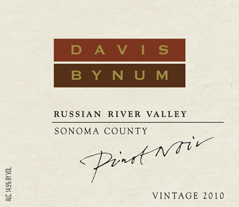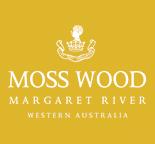 Recently I had the opportunity to taste through the wines of Moss Wood. They’re an Australian producer with a history dating to 1969. Their current winemaker Keith Mugford has been making the wines since 1979. Since 1984 Keith and his wife Clare have run the entire operation at Moss Wood. In their time at the helm they have made thoughtful advances such as being up to 75% in screw cap as far back as 2003. They’re located in Wilyabrup which is a sub-section of the Margret River region.
We started the evening by tasting a trio wines from four varietal verticals. Semillon, Chardonnay, Pinot Noir and Cabernet Sauvignon dating as far back as 1990 were the varietals and each was represented by an example from each of the last 3 decades.
Recently I had the opportunity to taste through the wines of Moss Wood. They’re an Australian producer with a history dating to 1969. Their current winemaker Keith Mugford has been making the wines since 1979. Since 1984 Keith and his wife Clare have run the entire operation at Moss Wood. In their time at the helm they have made thoughtful advances such as being up to 75% in screw cap as far back as 2003. They’re located in Wilyabrup which is a sub-section of the Margret River region.
We started the evening by tasting a trio wines from four varietal verticals. Semillon, Chardonnay, Pinot Noir and Cabernet Sauvignon dating as far back as 1990 were the varietals and each was represented by an example from each of the last 3 decades.
Moss Wood 1993 Semillon – This 20 year old Semillon has an obviously darker hue than the others which is natural for a white of this age. Bits of citrus appear on the nose along with a touch of toffee. Plenty of secondary characteristics emerge on the palate to go along with apple and a boatload of baker’s spice. This wine is still vibrant and alive. It’s a lovely and truly gorgeous example of aged Semillon.
Moss Wood 2003 Semillon – A gentle hint of Petrol emerges on the nose of this decade old Semillon. The palate is filled with a bevy of citrus notes. The finish here is long and fleshy with minerals, spice and pineapple characteristics all in abundance. This wine is delicious and giving but it will continue to evolve positively with more time.
Moss Wood 2013 Semillon – This is the current vintage and it has a suggested retail price of $42. Meyer lemon and lime notes light up the nose of this Semillon. Additional fruits such as white fig are part of the gently layered palate. The finish has good persistence and things end with bits of crispy acidity. Compared to the older vintages this wine is a bit reticent now. Time will open it up and allow it to more fully express its charms.
 Moss Wood 1991 Chardonnay – This 22 year old Chardonnay showcases a cavalcade of pure and expressive fruits. There is depth and complexity here to spare. Apple and pear flavors are joined by bits of hazelnut and toast. A bit of butter crème emerges on the finish which has excellent length and persistence. This is a gorgeous wine that exemplifies how fantastic Chardonnay can be when it’s treated appropriately all the way from vineyard to bottle.
Moss Wood 1991 Chardonnay – This 22 year old Chardonnay showcases a cavalcade of pure and expressive fruits. There is depth and complexity here to spare. Apple and pear flavors are joined by bits of hazelnut and toast. A bit of butter crème emerges on the finish which has excellent length and persistence. This is a gorgeous wine that exemplifies how fantastic Chardonnay can be when it’s treated appropriately all the way from vineyard to bottle.
Moss Wood 2003 Chardonnay – This Chardonnay has the darkest hue of the trio. The nose shows a bit of candied apple. The finish is fairly long with zippy acidity, minerals and a wisp of crème fraiche. Not quite as fresh or vibrant as either the 1991 or the 2011 but no less interesting.
Moss Wood 2011 Chardonnay – The current vintage, it has a suggested retail price of $63. Lemon custard and orchard fruits mark the deep and layered palate of this wine. Spices galore are present from the first whiff of the nose through the last, lingering note on the finish. This wine is loaded with gorgeous layers of fruit. It’s delicious now but will be even lovelier with time in the bottle. This release will likely get to a similar spot down the road that the 1991 is at today.
Moss Wood 1994 Pinot Noir – Plum aromas emerge from the still vibrant nose of this Pinot Noir along with mushroom and lot’s of secondary characteristics. Sour cherry notes dominate the palate and lead to a lengthy spice filled finish that also shows off black tea and hints of earth. This is a balanced and exquisite example of well aged Pinot Noir.
Moss Wood 2001 Pinot Noir – Red fruit, leather and a hint of smoked meat fills the expressive nose of this 12 year old Pinot Noir. Lots of cherry and strawberry star on te palate here along with hints of earth and mushroom. Minerals and sour red fruits emerge on the finish which has good persistence. Medium tannins that show a pleasing amount of grip and firm acidity speak to the wonderful structure this wine has. It’s delicious now, but certainly has quite a few years of aging ahead of it.
Moss Wood 2010 Pinot Noir – This is the current release, it has a suggested retail price of $62. Red and black cherry character dominates the nose of this Pinot. Red fruits interspersed with black, are key components throughout the palate, along with a well rounded complement of spices. All of these elements continue through the finish which has nice length. This Pinot is still young and a bit tight right now. It needs some time and a few years in bottle will serve it well. That said a few hours in the decanter are highly recommended if drinking it in the next couple of years.
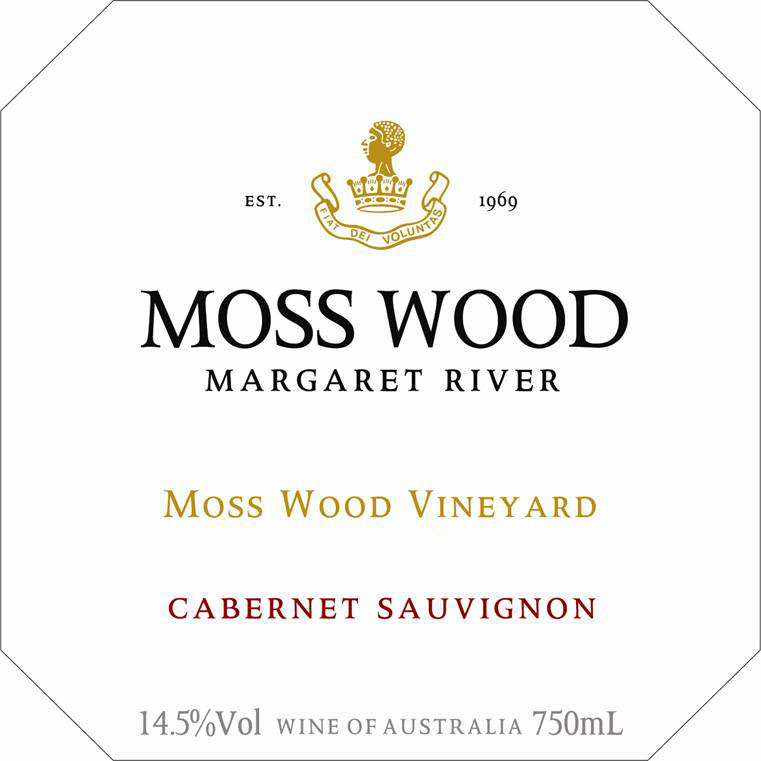 Moss Wood 1990 Cabernet Sauvignon – The fruit on this 23 year old Cabernet has receded and the secondary characteristics have really taken hold. Earth, minerals, espresso and a potpourri of spices are the dominant players here. Chocolate and leather emerge on the finish with some lingering remnants of cherry. If you like your Cabernet Sauvignon aged (and I do), this happens to be an excellent example. It’s beautifully perfumed, loaded with minerals and spice, easy drinking and layered. This is the kind of wine I could hide in the corner with, allowing it to keep me content all night long.
Moss Wood 1990 Cabernet Sauvignon – The fruit on this 23 year old Cabernet has receded and the secondary characteristics have really taken hold. Earth, minerals, espresso and a potpourri of spices are the dominant players here. Chocolate and leather emerge on the finish with some lingering remnants of cherry. If you like your Cabernet Sauvignon aged (and I do), this happens to be an excellent example. It’s beautifully perfumed, loaded with minerals and spice, easy drinking and layered. This is the kind of wine I could hide in the corner with, allowing it to keep me content all night long.
Moss Wood 2000 Cabernet Sauvignon – This wine is all about cherry characteristics. A combination of red and black cherry flavors dominates the nose and palate. Spice elements join in and continue through the finish where cherry flavors continue to ring out loud and clear. Bits of rhubarb and chicory are present as well. The tannins still have some bite and the acidity keeps things beautifully balanced. This is a fine Cabernet Sauvignon.
Moss Wood 2010 Cabernet Sauvignon – The current release, it has a suggested retail price of $105. Red and black raspberries emerge on the welcoming nose of this Cabernet Sauvignon. Blackberry, cherry and spice are all prominent through the layered palate which shows lots of depth. Blueberry, spices and espresso notes dot the finish which has good length. The tannins here are firm but give with some air. This is a young but approachable Cabernet Sauvignon that will improve greatly with several more years of age. It’s a promising wine that will only become better.
After the vertical tasting we moved on to sample a handful of their other releases alongside our dinner at CraftBar. Three of them were blends and they were lovely wines well suited to our meal. But for me the knockout amongst this quartet was the final wine which was paired with dessert.
Moss Wood Ribbonvale Botrytis 2011 Semillon – This wine was slowly fermented and then racked to barrel. It was bottled in January of this year. It’s available in both 375ml ($38), and 750ml ($70) bottles. Mission fig aromas are part of the nose on this lovely dessert wine. The palate is sweet but not overly so with 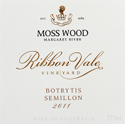 a variety of fruit and spice flavors coming to the forefront. Fruitcake spices emerge on the honeyed finish which has great length and nice acidity. This wine works equally well paired with other sweets or a cheese course.
a variety of fruit and spice flavors coming to the forefront. Fruitcake spices emerge on the honeyed finish which has great length and nice acidity. This wine works equally well paired with other sweets or a cheese course.
Tasting these wines in such a setting allowed us to see their aging potential as well as take a look at what the level of consistency is. While there was certainly vintage variation and some stylistic differences as they have made some adjustments in treatment over the years, each varietal had connective tissues within their subset that allowed us to see how they related to each other. The key here is that these wines were all made in a style that allowed their origin in the Margaret River to be showcased along with the vagaries of what each vintage brings. These are not manipulated products but vineyard driven wines that are allowed to shine. Each varietal is shepherded into bottle in a manner that makes long term aging not only possible but interesting and exciting. The Moss Wood wines taken as a whole were quite impressive. They’re fine examples of their place, their respective grapes and their particular vintages. If it’s been awhile since you’ve had top shelf Australian wine, the offerings from Moss Wood are a perfect spot to leap back in.
 Oregon has become a go to destination for those seeking genuine expressions of Pinot Noir. Producers of all shapes and sizes are based there making similarly wide ranging wines. Elizabeth Chambers Cellar is a boutique winery focused on Pinot Noir from Willamette Valley. They make several small lot single vineyard wines. They have also just released their first wine into national distribution, a Willamette Valley Cuvée. Even with this somewhat larger production wine they are still a very small winery at only 3,500 total cases. Here’s a look at the inaugural release of their newly launched wine.
The Elizabeth Chambers Cellar 2011 Winemaker’s Cuvée Pinot Noir was produced from fruit sourced at two vineyard sites. Most of the grapes came from the Freedom Hill Vineyard, the balance from the Lazy River Vineyard. Barrel aging took place over 10 months, largely in previously used oak. This wine has a suggested retail price of $32. Wild strawberry, leather and bits of black plum are prominent on the cheerful nose of this 2011 Pinot Noir. Firm black fruit flavors dominate the palate; these are dotted with interspersed bits of red fruit. Plum, cherry and raspberry are the most prominent of these characteristics and they’re accompanied by wisps of nutmeg. Black tea, minerals, cinnamon and a bit of red clay are all part of the long, lush finish. Firm acid and soft, sweet tannins provide nice structure.
Oregon has become a go to destination for those seeking genuine expressions of Pinot Noir. Producers of all shapes and sizes are based there making similarly wide ranging wines. Elizabeth Chambers Cellar is a boutique winery focused on Pinot Noir from Willamette Valley. They make several small lot single vineyard wines. They have also just released their first wine into national distribution, a Willamette Valley Cuvée. Even with this somewhat larger production wine they are still a very small winery at only 3,500 total cases. Here’s a look at the inaugural release of their newly launched wine.
The Elizabeth Chambers Cellar 2011 Winemaker’s Cuvée Pinot Noir was produced from fruit sourced at two vineyard sites. Most of the grapes came from the Freedom Hill Vineyard, the balance from the Lazy River Vineyard. Barrel aging took place over 10 months, largely in previously used oak. This wine has a suggested retail price of $32. Wild strawberry, leather and bits of black plum are prominent on the cheerful nose of this 2011 Pinot Noir. Firm black fruit flavors dominate the palate; these are dotted with interspersed bits of red fruit. Plum, cherry and raspberry are the most prominent of these characteristics and they’re accompanied by wisps of nutmeg. Black tea, minerals, cinnamon and a bit of red clay are all part of the long, lush finish. Firm acid and soft, sweet tannins provide nice structure.
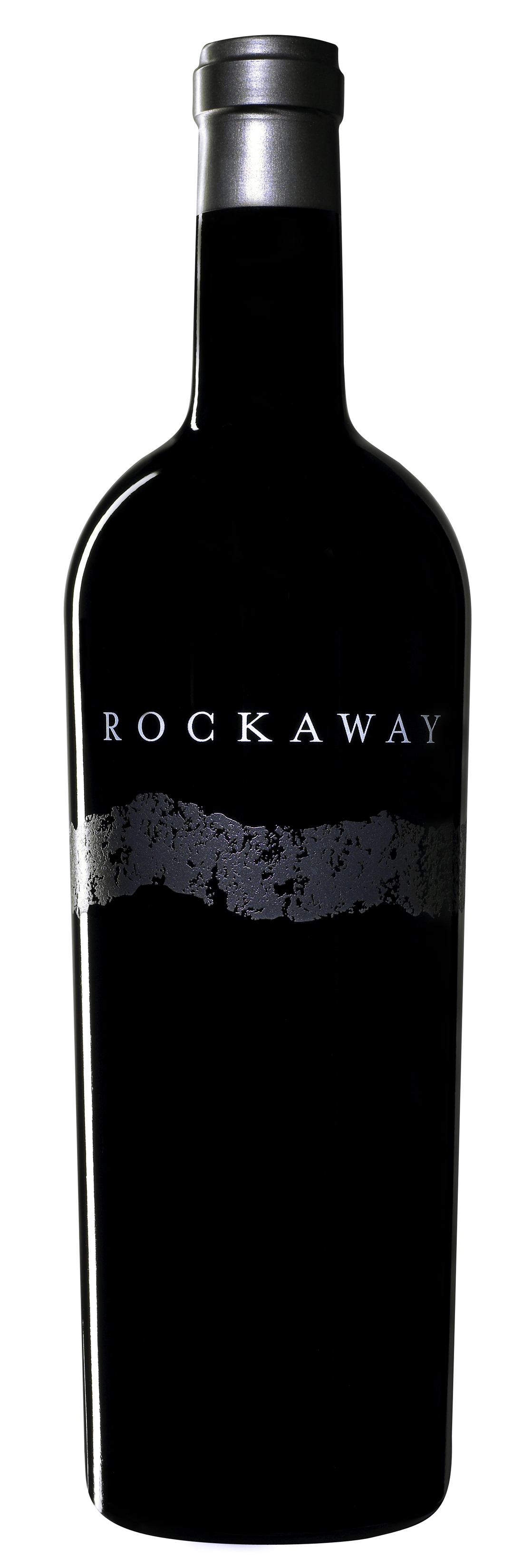 The folks over at
The folks over at  For most people Sauvignon Blanc is the primary grape that comes to mind when New Zealand is mentioned. And with good reason, they produce quite a bit of it. Not to mention that they also offer a lot of stunning examples, seemingly at every imaginable price point. Pinot Noir however has been coming on strong for awhile now, and who knows, perhaps someday we’ll think of New Zealand for Pinot first. Here’s an example I just tasted that really made me sit up and take notice.
The Loveblock 2011 Pinot Noir was produced entirely from one vineyard. Someone’s Darling is a 20 acre block located above the mountains of Central Otago in New Zealand. Five clones of Pinot Noir are planted there. The vineyard is sustainably farmed and accredited as such in New Zealand (SWNZ). The grapes were machine harvested and de-stemmed. They had a 5 day cold pre-soak prior to being inoculated with yeast and undergoing fermentation. This wine most often sells for right around $30. Mushroom, leather, red cherry and bits of earth are all present on the expressive nose of this 2011 Pinot Noir. Wild Strawberry characteristics are joined by red and black cherry, along with rhubarb as well as cinnamon and black pepper on a somewhat weighty palate that is studded with appealing flavors. The finish is lingering and impressive in length with mineral notes, earth and hints of sour cherry. If you love good Pinot Noir that speaks of its origins, this wine is for you. It’s impeccably balanced and has firm, racy acidity. Loveblock 2011 Pinot Noir is delicious all by itself. However it’ll pair well with lots of food choices. Anything with mushrooms, pork dishes, and Pasta Bolognese are just a couple of options.
For most people Sauvignon Blanc is the primary grape that comes to mind when New Zealand is mentioned. And with good reason, they produce quite a bit of it. Not to mention that they also offer a lot of stunning examples, seemingly at every imaginable price point. Pinot Noir however has been coming on strong for awhile now, and who knows, perhaps someday we’ll think of New Zealand for Pinot first. Here’s an example I just tasted that really made me sit up and take notice.
The Loveblock 2011 Pinot Noir was produced entirely from one vineyard. Someone’s Darling is a 20 acre block located above the mountains of Central Otago in New Zealand. Five clones of Pinot Noir are planted there. The vineyard is sustainably farmed and accredited as such in New Zealand (SWNZ). The grapes were machine harvested and de-stemmed. They had a 5 day cold pre-soak prior to being inoculated with yeast and undergoing fermentation. This wine most often sells for right around $30. Mushroom, leather, red cherry and bits of earth are all present on the expressive nose of this 2011 Pinot Noir. Wild Strawberry characteristics are joined by red and black cherry, along with rhubarb as well as cinnamon and black pepper on a somewhat weighty palate that is studded with appealing flavors. The finish is lingering and impressive in length with mineral notes, earth and hints of sour cherry. If you love good Pinot Noir that speaks of its origins, this wine is for you. It’s impeccably balanced and has firm, racy acidity. Loveblock 2011 Pinot Noir is delicious all by itself. However it’ll pair well with lots of food choices. Anything with mushrooms, pork dishes, and Pasta Bolognese are just a couple of options. I’m a firm believer that most of us should be drinking sparkling wine more often. It can be versatile with food, often delicious on its own and quite frankly just plain fun. That said the one day we all seem to agree on when it comes to Sparkling Wine consumption is New Years Eve. With that in mind here are three that I tried recently and really enjoyed. One of them falls into the traditional category of classic Champagne. The other two are new world entries, one traditional in style and intent, and the other leaps and bounds in a different direction. Most importantly each of them is unique and delicious.
I’m a firm believer that most of us should be drinking sparkling wine more often. It can be versatile with food, often delicious on its own and quite frankly just plain fun. That said the one day we all seem to agree on when it comes to Sparkling Wine consumption is New Years Eve. With that in mind here are three that I tried recently and really enjoyed. One of them falls into the traditional category of classic Champagne. The other two are new world entries, one traditional in style and intent, and the other leaps and bounds in a different direction. Most importantly each of them is unique and delicious.
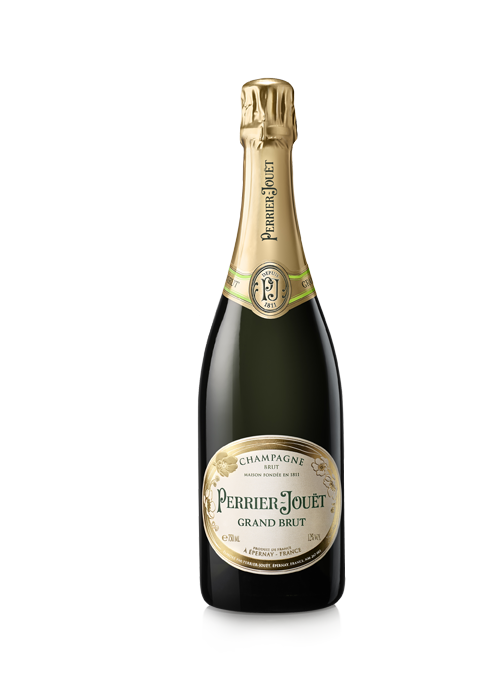 widely available Brut style wine has a suggested retail price of $22. Bits of citrus and white stone fruits fill the nose this wine. This entry level selection in the Mumm portfolio and it’s a classic Brut. The palate is dry and loaded with fruit and spice. Yeast and biscuit characteristics emerge on the finish which has nice length. While the friendly price makes it an obvious choice for holiday celebrations this wine will go very well with food whether it’s paired with a first course during dinner or alongside brunch, you’ll be pleased with the results.
widely available Brut style wine has a suggested retail price of $22. Bits of citrus and white stone fruits fill the nose this wine. This entry level selection in the Mumm portfolio and it’s a classic Brut. The palate is dry and loaded with fruit and spice. Yeast and biscuit characteristics emerge on the finish which has nice length. While the friendly price makes it an obvious choice for holiday celebrations this wine will go very well with food whether it’s paired with a first course during dinner or alongside brunch, you’ll be pleased with the results. The Davis Bynum 2011 River West Chardonnay was produced from fruit sourced exclusively at the namesake vineyard. Blocks of fruit from this vineyard were harvested separately and each batch was pressed and fermented separately. Barrel aging took place over 10 months in entirely French oak. This wine has a suggested retail price of $30. Gravenstein apple and baker’s spice aromas are in full force on the nose of this Chardonnay. The palate is fruit and spice driven with apples, pear, pineapple, cinnamon and clove all in evidence. Hint of lemon curd lead the finish along with minerals and a copious amount of spice. This Chardonnay is rich and round with crispy acidity. It’s delicious sipped alone but will flourish with lighter fare.
The Davis Bynum 2011 River West Chardonnay was produced from fruit sourced exclusively at the namesake vineyard. Blocks of fruit from this vineyard were harvested separately and each batch was pressed and fermented separately. Barrel aging took place over 10 months in entirely French oak. This wine has a suggested retail price of $30. Gravenstein apple and baker’s spice aromas are in full force on the nose of this Chardonnay. The palate is fruit and spice driven with apples, pear, pineapple, cinnamon and clove all in evidence. Hint of lemon curd lead the finish along with minerals and a copious amount of spice. This Chardonnay is rich and round with crispy acidity. It’s delicious sipped alone but will flourish with lighter fare. The folks at
The folks at  Recently I had the opportunity to taste through the wines of
Recently I had the opportunity to taste through the wines of  Moss Wood 1991 Chardonnay – This 22 year old Chardonnay showcases a cavalcade of pure and expressive fruits. There is depth and complexity here to spare. Apple and pear flavors are joined by bits of hazelnut and toast. A bit of butter crème emerges on the finish which has excellent length and persistence. This is a gorgeous wine that exemplifies how fantastic Chardonnay can be when it’s treated appropriately all the way from vineyard to bottle.
Moss Wood 1991 Chardonnay – This 22 year old Chardonnay showcases a cavalcade of pure and expressive fruits. There is depth and complexity here to spare. Apple and pear flavors are joined by bits of hazelnut and toast. A bit of butter crème emerges on the finish which has excellent length and persistence. This is a gorgeous wine that exemplifies how fantastic Chardonnay can be when it’s treated appropriately all the way from vineyard to bottle.
 a variety of fruit and spice flavors coming to the forefront. Fruitcake spices emerge on the honeyed finish which has great length and nice acidity. This wine works equally well paired with other sweets or a cheese course.
a variety of fruit and spice flavors coming to the forefront. Fruitcake spices emerge on the honeyed finish which has great length and nice acidity. This wine works equally well paired with other sweets or a cheese course. European wine can be intimidating to wine drinkers for a variety of reasons. Those with an interest in wine but who aren't total geeks about it don’t necessarily know the nuances of labeling and what might be in a particular bottle due to it generally listing region as opposed to varietal content. Stylistically many old world wines are often subtler than their new world counterparts and it can take time for palates to come around to the layered charms of those often elegant offerings. In contrast to all of that Domaines Paul Mas from the Languedoc region of France has some releases that are labeled in such a way that even the budding wine lover can easily discern contents. Additionally they are making wines that bridge the gap in style between the old and new worlds. Here’s a look at three of their current releases.
The Paul Mas 2011 Estate Pinot Noir is a single vineyard effort. All of the fruit for this wine came from their St. Hilaire Vineyard located in the Languedoc Region. This offering is 100% Pinot Noir. After maceration the fruit was fermented in a temperature controlled environment for approximately 9 days. Aging took place over 6 months in stainless steel, followed by 2 months in bottle prior to release. This wine has a suggested retail price of $14. Aromas of Strawberry and red cherry fill the nose of this Pinot Noir along with secondary characteristics such as mushroom. Those red fruit characteristics carry through the palate which is towards the more substantial side for Pinot Noir. Minerals, spice and earth are all in strong evidence on the finish which has good length. Medium tannins and zippy acidity lend to a nice backbone and structure here. This is a Pinot from the old world that shows off new world flavors while still being proportionate.
European wine can be intimidating to wine drinkers for a variety of reasons. Those with an interest in wine but who aren't total geeks about it don’t necessarily know the nuances of labeling and what might be in a particular bottle due to it generally listing region as opposed to varietal content. Stylistically many old world wines are often subtler than their new world counterparts and it can take time for palates to come around to the layered charms of those often elegant offerings. In contrast to all of that Domaines Paul Mas from the Languedoc region of France has some releases that are labeled in such a way that even the budding wine lover can easily discern contents. Additionally they are making wines that bridge the gap in style between the old and new worlds. Here’s a look at three of their current releases.
The Paul Mas 2011 Estate Pinot Noir is a single vineyard effort. All of the fruit for this wine came from their St. Hilaire Vineyard located in the Languedoc Region. This offering is 100% Pinot Noir. After maceration the fruit was fermented in a temperature controlled environment for approximately 9 days. Aging took place over 6 months in stainless steel, followed by 2 months in bottle prior to release. This wine has a suggested retail price of $14. Aromas of Strawberry and red cherry fill the nose of this Pinot Noir along with secondary characteristics such as mushroom. Those red fruit characteristics carry through the palate which is towards the more substantial side for Pinot Noir. Minerals, spice and earth are all in strong evidence on the finish which has good length. Medium tannins and zippy acidity lend to a nice backbone and structure here. This is a Pinot from the old world that shows off new world flavors while still being proportionate. Certain things in the wine world hit my sweet spot. That could certainly be particular grapes or styles of wine. But one thing that hits my sweet spot almost every time is a solid value. I’m a firm believer that at any price point a wine can be a value for the quality and style it represents in its category. However in this case I’m talking about everyday values. This is a huge category of wine; numerous categories lumped together at times actually, aimed at people’s everyday drinking budget. Wine lovers are always on the hunt for something that tastes good, offers some depth and doesn’t cost a ton. Trouble is that the vast category of everyday value contains lots of unpleasant or at the very least anonymous wines. We’ve all had them, you take a sip, then another and all you can do is confirm, “yup that’s wine.” What that represents to me is sadness, because there are lots of delicious wines available that are well made and offer excellent value. Here’s a look at a terrific one in the most difficult category of all in my opinion, value priced Pinot Noir.
The Brancott Estate 2011 Marlborough Pinot Noir was produced from fruit sourced in the namesake region. This wine is entirely Pinot Noir. The vines used represent a handful of different Pinot Noir clones allowing for a broader flavor profile. After harvesting the fruit was destemmed and cold soaked for four days prior to fermentation utilizing an array of yeast strains. This Pinot was aged over four months in a combination of stainless steel and oak. This wine is widely available around the country and has a suggested retail price of $12.99. However it often sells for closer to $10, so shop around.
Certain things in the wine world hit my sweet spot. That could certainly be particular grapes or styles of wine. But one thing that hits my sweet spot almost every time is a solid value. I’m a firm believer that at any price point a wine can be a value for the quality and style it represents in its category. However in this case I’m talking about everyday values. This is a huge category of wine; numerous categories lumped together at times actually, aimed at people’s everyday drinking budget. Wine lovers are always on the hunt for something that tastes good, offers some depth and doesn’t cost a ton. Trouble is that the vast category of everyday value contains lots of unpleasant or at the very least anonymous wines. We’ve all had them, you take a sip, then another and all you can do is confirm, “yup that’s wine.” What that represents to me is sadness, because there are lots of delicious wines available that are well made and offer excellent value. Here’s a look at a terrific one in the most difficult category of all in my opinion, value priced Pinot Noir.
The Brancott Estate 2011 Marlborough Pinot Noir was produced from fruit sourced in the namesake region. This wine is entirely Pinot Noir. The vines used represent a handful of different Pinot Noir clones allowing for a broader flavor profile. After harvesting the fruit was destemmed and cold soaked for four days prior to fermentation utilizing an array of yeast strains. This Pinot was aged over four months in a combination of stainless steel and oak. This wine is widely available around the country and has a suggested retail price of $12.99. However it often sells for closer to $10, so shop around. One of the things I enjoy about the way Chilean winery’s are often setup is the tier system. Many times a single winery has numerous designations of wines in a variety of price tiers. Most importantly the intent of the wines in each tier tends to be distinct from others.
One of the things I enjoy about the way Chilean winery’s are often setup is the tier system. Many times a single winery has numerous designations of wines in a variety of price tiers. Most importantly the intent of the wines in each tier tends to be distinct from others.  Cuvaison Winery
Cuvaison Winery
 Last week I was lucky enough to sit and taste wine over dinner with Bernard Portet at
Last week I was lucky enough to sit and taste wine over dinner with Bernard Portet at  When I was in Chile last month I participated in a virtual Blogger tasting. I’d taken part in previous tastings of that kind from home before. But on this occasion I was onsite in an adjacent room while the winemakers discussed their varied offerings a few feet away. Getting to mingle with a roomful of winemakers before and after the tasting was one of many highlights that dotted a wonderful week in Chile. There were several standouts for me that day; one of them came from producer
When I was in Chile last month I participated in a virtual Blogger tasting. I’d taken part in previous tastings of that kind from home before. But on this occasion I was onsite in an adjacent room while the winemakers discussed their varied offerings a few feet away. Getting to mingle with a roomful of winemakers before and after the tasting was one of many highlights that dotted a wonderful week in Chile. There were several standouts for me that day; one of them came from producer  The Ventisquero 2010 Grey Carmenère was produced from fruit sourced at Trinidad Vineyard in Chile’s Maipo Valley. This is a 100% varietal offering. Fermentation took place in stainless steel tanks followed by aging in French oak over 18 months. 33% of the barrels utilized were new. An additional 8 months of bottle aging occurred prior to release. This wine has a suggested retail price of $23.99. Boysenberry, vanilla and violet aromas burst out from the nose of this Carmenère. The palate is juicy and pleasing with plums, blackberry and berry fruit flavors galore. Green herb notes underscore things here and play a supporting role. Black tea, plum pudding spices, minerals and black pepper all emerge on the finish. There is a lovely balance in this wine with loads of eager fruit buoyed by lots of spice and a lovely collection of herbaceous characteristics. The Ventisquero Carmenère works equally well paired with full flavored foods as it does on its own.
The Ventisquero 2010 Grey Carmenère was produced from fruit sourced at Trinidad Vineyard in Chile’s Maipo Valley. This is a 100% varietal offering. Fermentation took place in stainless steel tanks followed by aging in French oak over 18 months. 33% of the barrels utilized were new. An additional 8 months of bottle aging occurred prior to release. This wine has a suggested retail price of $23.99. Boysenberry, vanilla and violet aromas burst out from the nose of this Carmenère. The palate is juicy and pleasing with plums, blackberry and berry fruit flavors galore. Green herb notes underscore things here and play a supporting role. Black tea, plum pudding spices, minerals and black pepper all emerge on the finish. There is a lovely balance in this wine with loads of eager fruit buoyed by lots of spice and a lovely collection of herbaceous characteristics. The Ventisquero Carmenère works equally well paired with full flavored foods as it does on its own.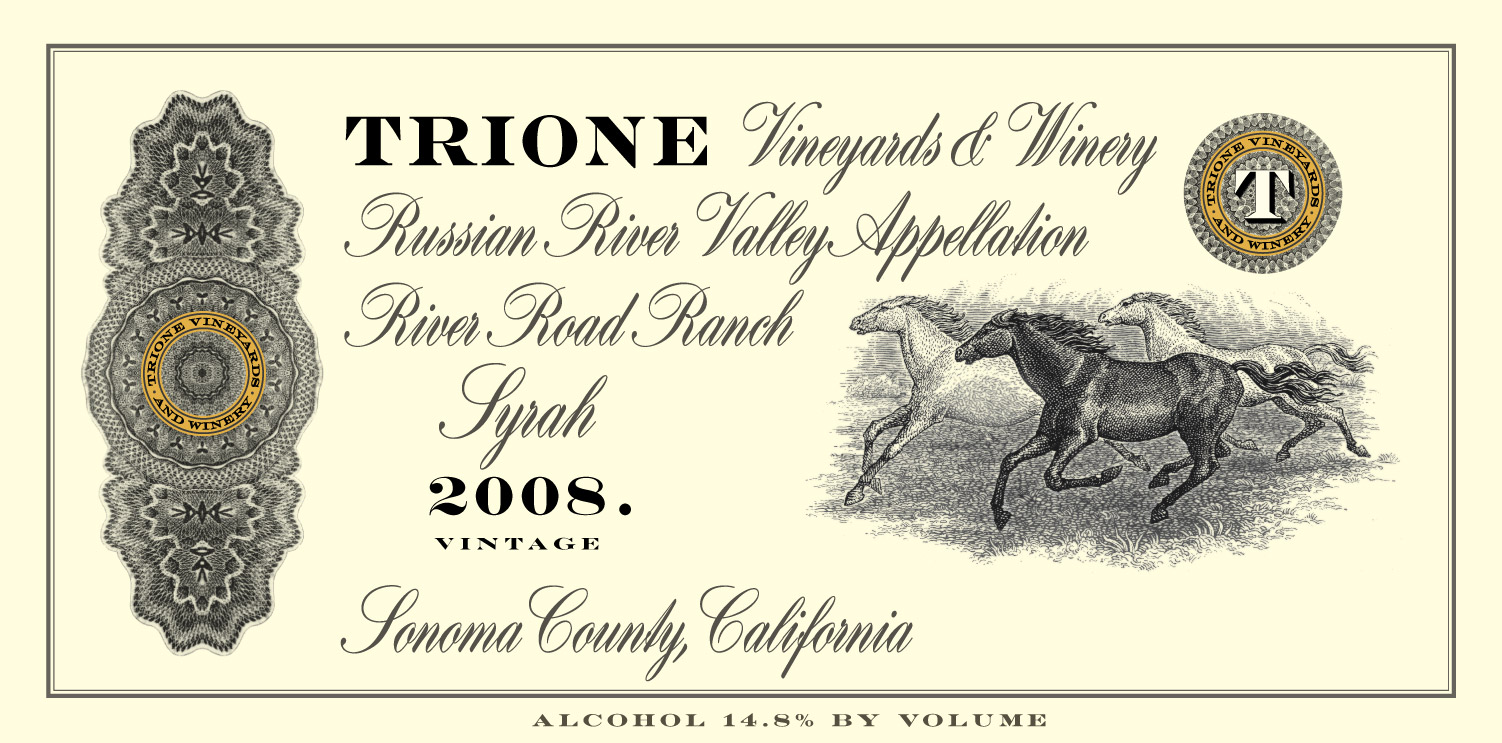 For more than 30 years the Trione Family has been growing and selling grapes in Sonoma County from their own property as well as vineyards they manage. In 2005 they launched
For more than 30 years the Trione Family has been growing and selling grapes in Sonoma County from their own property as well as vineyards they manage. In 2005 they launched 
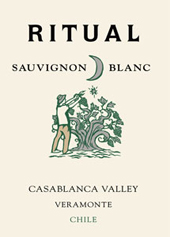 Veramonte – 2011 Ritual Sauvignon Blanc – This wine is richer and riper than the entry level Sauvignon Blanc. The palate has a bit more heft than the average Chilean Sauvignon Blanc. It’s a spicy and round wine with a mineral laden finish. Most of the fruit was sourced from two high performing blocks. Their goal of proactive farming as opposed to winery manipulation shines through in this release.
Veramonte – 2011 Ritual Sauvignon Blanc – This wine is richer and riper than the entry level Sauvignon Blanc. The palate has a bit more heft than the average Chilean Sauvignon Blanc. It’s a spicy and round wine with a mineral laden finish. Most of the fruit was sourced from two high performing blocks. Their goal of proactive farming as opposed to winery manipulation shines through in this release. It’s a good thing I keep lists. In this case it’s a list of Wineries in Sonoma County I keep meaning to get to but haven’t yet. Thankfully I can now scratch
It’s a good thing I keep lists. In this case it’s a list of Wineries in Sonoma County I keep meaning to get to but haven’t yet. Thankfully I can now scratch  The Rodney Strong Vineyards 2010 Chalk Hill Chardonnay was produced entirely from fruit sourced in the Chalk Hill appellation of Sonoma County. This offering is 100% Chardonnay. 92% of the wine was fermented in French oak and underwent malolactic fermentation. That portion was also aged in new and seasoned barrels for 9 months; the balance was fermented and aged in stainless steel. This widely available wine has a suggested retail price of $20. Aromas of vanilla, lemon zest and subtle toast emerge from the nose of this Chardonnay. Bartlett pear and yellow delicious apple flavors are dominant through the palate along with a wallop of zesty lemon curd which is one of the hallmarks of this wine year after year. Minerals, white pepper and baker’s spice are part of the finish along with hints of creaminess. Firm structure marked by solid acidity makes this a Chardonnay well heeled to pair with a variety of food styles. The Chalk Hill release from Rodney Strong is in that beautiful middle ground of Chardonnays that showcase pure fruit that are enhanced by judicious use of oak which is clearly present but never detracts. Drink it up, they make more every year.
The Rodney Strong Vineyards 2010 Chalk Hill Chardonnay was produced entirely from fruit sourced in the Chalk Hill appellation of Sonoma County. This offering is 100% Chardonnay. 92% of the wine was fermented in French oak and underwent malolactic fermentation. That portion was also aged in new and seasoned barrels for 9 months; the balance was fermented and aged in stainless steel. This widely available wine has a suggested retail price of $20. Aromas of vanilla, lemon zest and subtle toast emerge from the nose of this Chardonnay. Bartlett pear and yellow delicious apple flavors are dominant through the palate along with a wallop of zesty lemon curd which is one of the hallmarks of this wine year after year. Minerals, white pepper and baker’s spice are part of the finish along with hints of creaminess. Firm structure marked by solid acidity makes this a Chardonnay well heeled to pair with a variety of food styles. The Chalk Hill release from Rodney Strong is in that beautiful middle ground of Chardonnays that showcase pure fruit that are enhanced by judicious use of oak which is clearly present but never detracts. Drink it up, they make more every year. The Gary Farrell 2010 Sauvignon Blanc was produced from fruit sourced at Redwood Ranch in Sonoma County. This vineyard sits at the very southern end of Alexander Valley. The vines sourced for this offering were planted in 1997. The Gary Farrell 2010 Sauvignon Blanc is a 100% varietal wine. This wine was bottled n January 2011 after a short time in oak. Just over 1,500 cases of this offering were produced and it has a suggested retail price of $25. Pear and citrus aromas fill the nose of this 2010 Sauvignon Blanc. Copious quantities of citrus and topical fruit flavors such as yellow plum, mango and lemon zest are layered throughout a welcoming and weighty mid-palate. Spice and continued fruit flavors fill the impressively lengthy finish of this Sauvignon Blanc. If you prefer Sauvignon Blanc that leans towards the tropical and fruity side, this beauty is for you.
The Gary Farrell 2010 Sauvignon Blanc was produced from fruit sourced at Redwood Ranch in Sonoma County. This vineyard sits at the very southern end of Alexander Valley. The vines sourced for this offering were planted in 1997. The Gary Farrell 2010 Sauvignon Blanc is a 100% varietal wine. This wine was bottled n January 2011 after a short time in oak. Just over 1,500 cases of this offering were produced and it has a suggested retail price of $25. Pear and citrus aromas fill the nose of this 2010 Sauvignon Blanc. Copious quantities of citrus and topical fruit flavors such as yellow plum, mango and lemon zest are layered throughout a welcoming and weighty mid-palate. Spice and continued fruit flavors fill the impressively lengthy finish of this Sauvignon Blanc. If you prefer Sauvignon Blanc that leans towards the tropical and fruity side, this beauty is for you.